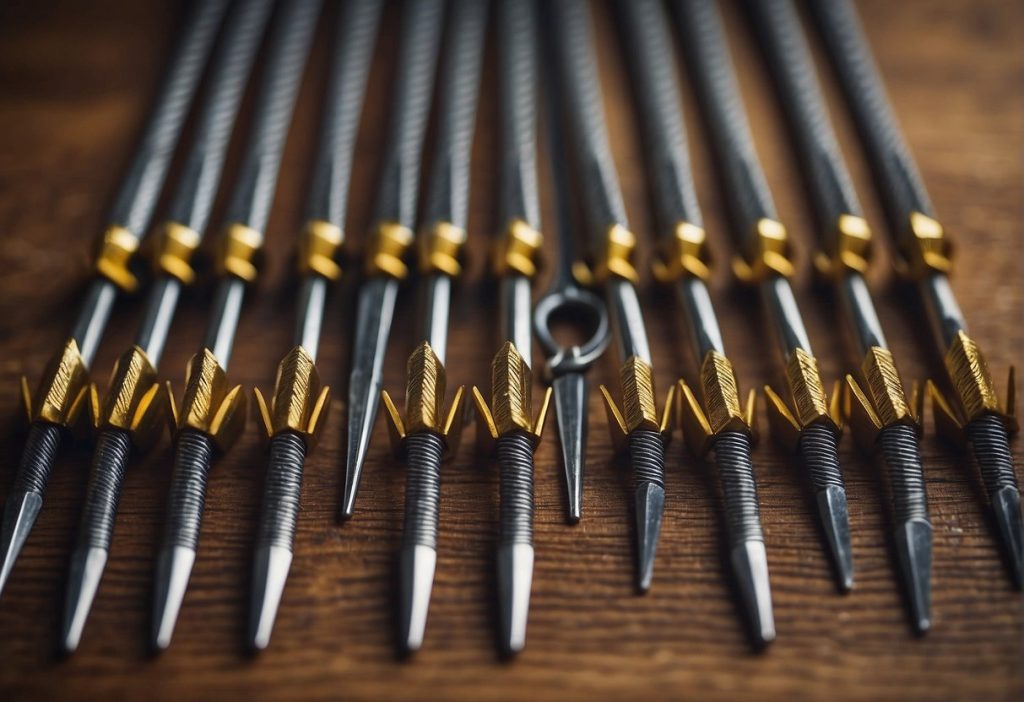
Crossbow hunting has gained immense popularity in recent years due to its combination of power, precision, and excitement. Choosing the best crossbow bolts is essential for maximizing your hunting experience, as the right crossbow bolt contributes significantly to accuracy and speed. This article will guide you through the essential aspects to consider when selecting the ultimate crossbow bolts for your needs.
As you embark on your quest for top-quality crossbow bolts, you’ll discover a wide variety that caters to different purposes, materials, and designs. Carbon, glass, and metal crossbow bolts each have their own advantages in terms of durability, flight, and overall performance. The best crossbow bolts of 2023 offer impressive hunting and archery experiences, ensuring that you achieve optimal results on your excursions.
When selecting crossbow bolts, it’s crucial to consider factors such as length, total weight, and compatibility with your crossbow. Balancing these aspects will allow you to achieve maximum speed and accuracy while hunting. Delve into the world of crossbow bolts armed with this knowledge, and you’ll find yourself well-equipped to make an informed decision that enhances your hunting prowess.
Understanding Crossbow Bolts
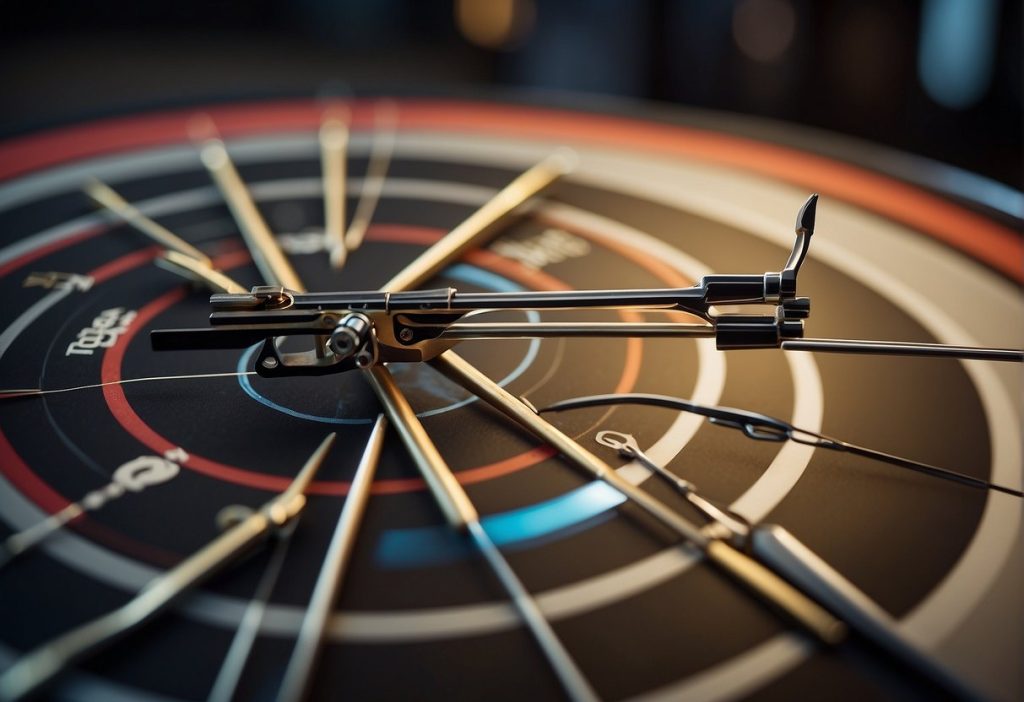
When it comes to choosing the best crossbow bolts, understanding the key components and materials is crucial. In this section, we’ll discuss the different materials used for crossbow bolt shafts and their impact on performance.
Crossbow bolt shafts are made from a variety of materials, each with its own unique properties. The four main types of materials include carbon, aluminum, wood, and fiberglass.
- A Carbon bolt shaft is lightweight and offer excellent accuracy, speed, and durability. This material is a popular choice for many crossbow enthusiasts due to its high-performance capabilities. Carbon bolts are often used by experienced shooters, but they can also be more expensive than other materials. Check out The Ultimate Guide to Crossbow Bolt Specifications for selecting the right bolt length and spine.
- Aluminum bolts are also lightweight and provide consistent shooting performance. While not as durable as carbon, aluminum bolts are an affordable option, especially for beginners. They offer a good balance between cost and performance, making them a reliable choice for casual crossbow users. The OutdoorHub recommends considering your hunting style when choosing the best bolts for your crossbow.
- Wood shafts are traditional and can offer a classic archery experience. However, they may not be as consistent and durable as carbon or aluminum options. Wood bolts can be more susceptible to warping and might not provide the best shooting experience for modern high-powered crossbows.
- Fiberglass shafts are known for their durability and overall toughness. While they might not be as lightweight or accurate as carbon and aluminum options, they can be a cost-effective choice for recreational use or those who prioritize durability over precision.
In summary, consider your budget, experience level, and overall preferences when selecting crossbow bolt materials. Carbon and aluminum shafts tend to be popular choices for their performance and consistency. Wood and fiberglass might be suitable options if you prefer traditional materials or prioritize durability. By understanding the features of each material, you can make an informed decision to improve your crossbow shooting experience.
Characteristics of Top-Quality Bolts
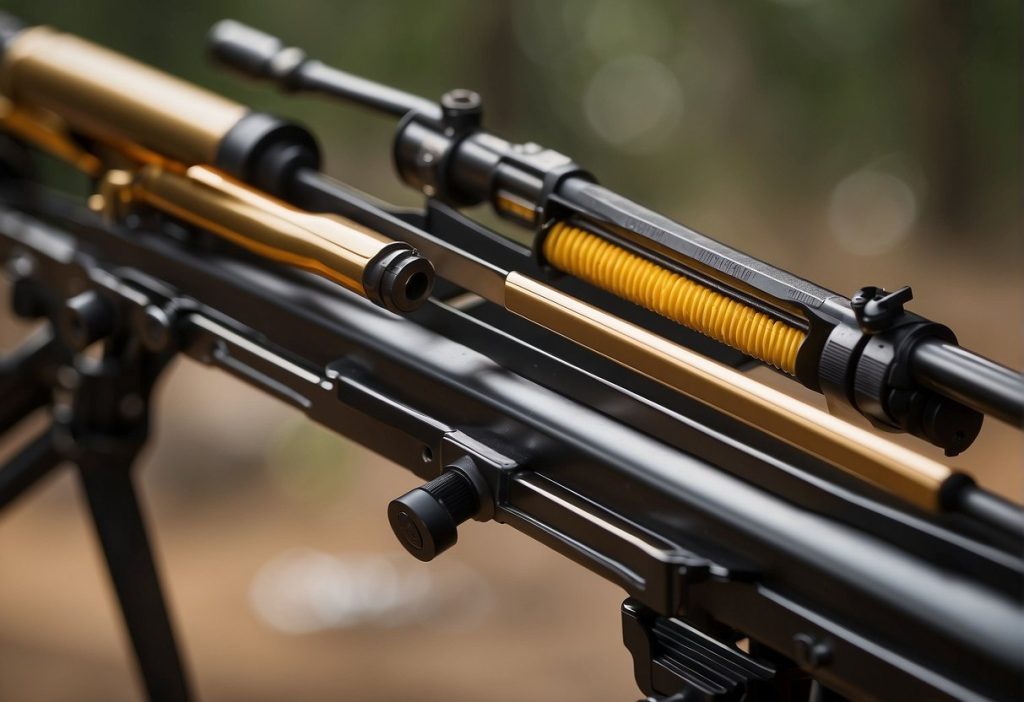
Material and Construction
When choosing top-quality crossbow bolts, the material and construction are important factors to consider. High-quality bolts usually have carbon shafts or aluminum bolts. Carbon shafts are known for their durability, lightweight nature, and overall performance. They offer a great balance between speed and strength, making them a popular choice among hunters and archers. On the other hand, aluminum bolts are heavier and are not prone to warping, making them ideal for target shooting.
Weight and Balance
Another characteristic of top-quality bolts is their weight and balance. In general, the weight of a bolt is measured in grains. A heavier bolt tends to fly more accurately and deliver more kinetic energy, which is essential for hunting. Lighter bolts, however, are faster and can have a flatter trajectory, making them more suitable for target shooting.
When looking at bolt weight, it’s crucial to match the bolt weight recommendations provided by your crossbow manufacturer. A well-balanced bolt ensures maximum performance and accuracy, so don’t overlook this aspect when choosing top-quality bolts.
Length and Diameter
Finally, the length and diameter of a crossbow bolt play a significant role in determining its quality. Top-rated crossbow bolts usually have a length of 18 to 20 inches for increased kinetic energy 1. Longer bolts generally have more stability, while a shorter bolt is easier to handle and maneuver.
The shaft diameter of a bolt affects its speed, penetration, and overall flight performance. Smaller diameter bolts create less drag, allowing them to maintain their speed better and penetrate deeper into a target. Top-quality bolts typically have a straightness tolerance of +/- 0.004″ or better 1, resulting in consistent and accurate shots.
By understanding these characteristics, you can make an informed decision when selecting the best crossbow bolts for your needs.
Bolt Performance Factors
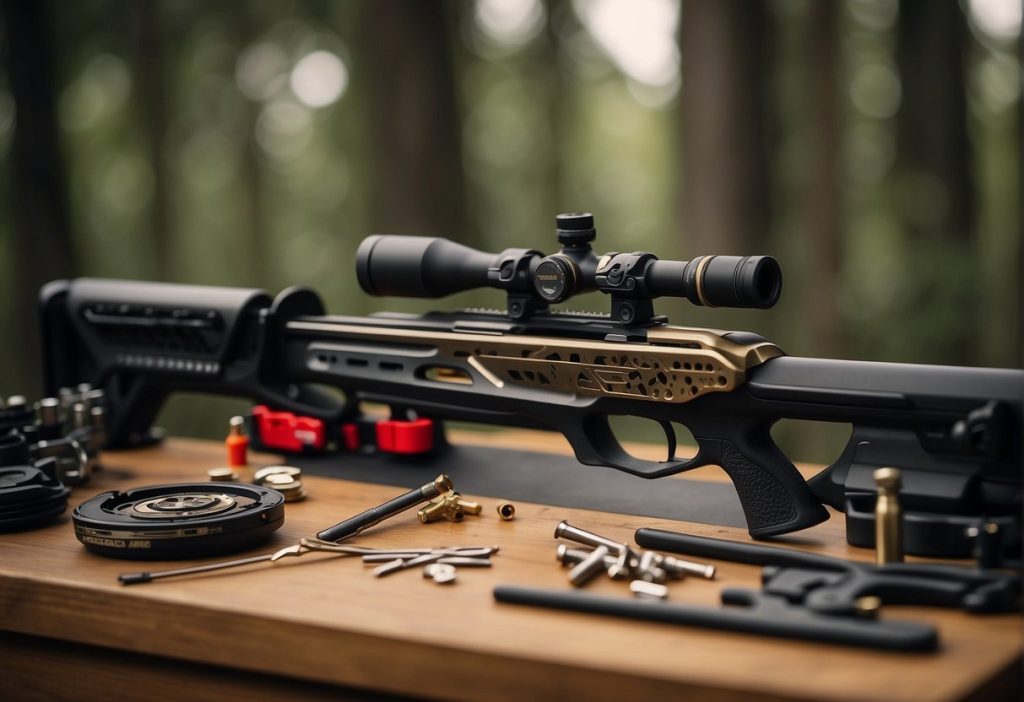
Speed and Kinetic Energy
When it comes to crossbow bolts, speed and kinetic energy are crucial performance factors that can determine the efficiency of your shots. Higher bolt speed typically translates to increased kinetic energy, which in turn improves the bolt’s ability to penetrate targets effectively. However, it’s important to remember that speed and kinetic energy often come at the expense of other factors, such as accuracy and control. So, when selecting crossbow bolts for a specific hunting situation, you should carefully consider the relative importance of speed, kinetic energy, and other performance aspects.
Accuracy and Precision
The accuracy and precision of a crossbow bolt are primarily determined by the overall quality of its construction, as well as the choice of fletching and nock design. High-quality crossbow bolts will:
- Have consistent spine consistency
- Use fletchings that provide stable flight
- Utilize nocks designed for optimal release
To improve your accuracy and precision, you should regularly practice with the same type of bolts you use in the field, and fine-tune your crossbow settings to optimize performance with those specific projectiles.
Penetration and Impact
Effective penetration and impact are critical for a successful hunt. The penetrating power of a bolt is influenced by several factors such as:
- Bolt weight: Heavier bolts typically have more momentum, which helps them retain kinetic energy, and thus penetrate deeper on impact.
- Bolt design: The structure and shape of the bolt’s tip can significantly impact penetration capability.
- Shot placement: Placing your shots on the target’s vital areas can increase penetration and ensure a quick, clean kill.
In summary, when choosing crossbow bolts, you should always balance the trade-offs among speed, kinetic energy, accuracy, precision, penetration, and impact, selecting projectiles that best suit the specific hunting situation you are facing. By doing so, you can optimize your bolt selection for performance and ensure success during your next hunting adventure.
Types of Nocks and Their Importance
When it comes to crossbow bolts, one crucial aspect is the type of nock used. Nocks play a significant role in ensuring the accuracy and stability of your shot. In this section, we’ll discuss different types of nocks and their importance in crossbow shooting.
Moon Nock: Also known as the half-moon nocks, this type of nock has a groove that you need to align with your string before firing the bolt. The half moon nocks shape provides a secure fit for the string, ensuring consistent and accurate shots.
Flat Nock: This is the oldest type of crossbow nock. As the name suggests, it has a flat rear design. Flat nocks are straightforward to use and require no special alignment, but they may lack the accuracy and stability provided by other nock types.
Capture Nock: A capture nock, also known as an omni-nock, is designed to keep the bolt securely attached to the string, minimizing the chances of dry firing. This nock is suitable for both beginners and experienced archers seeking improved safety and accuracy.
Lighted Nocks: Lighted nocks are designed to help you track your shot during low-light conditions. They feature an LED that illuminates upon release, making it easier to locate your bolt after firing. Keep in mind that, while useful, lighted nocks may add extra weight to your bolt, which can affect arrow trajectory.
In summary, choosing the right nock for your crossbow bolts depends on your personal preferences, skill level, and the intended purpose. By using a suitable type of nock, you can increase the chances of your shots being accurate and stable. Experimenting with different nock options and finding the one that best suits your needs will help you achieve the best results in your crossbow shooting endeavors.
Selecting the Right Broadheads
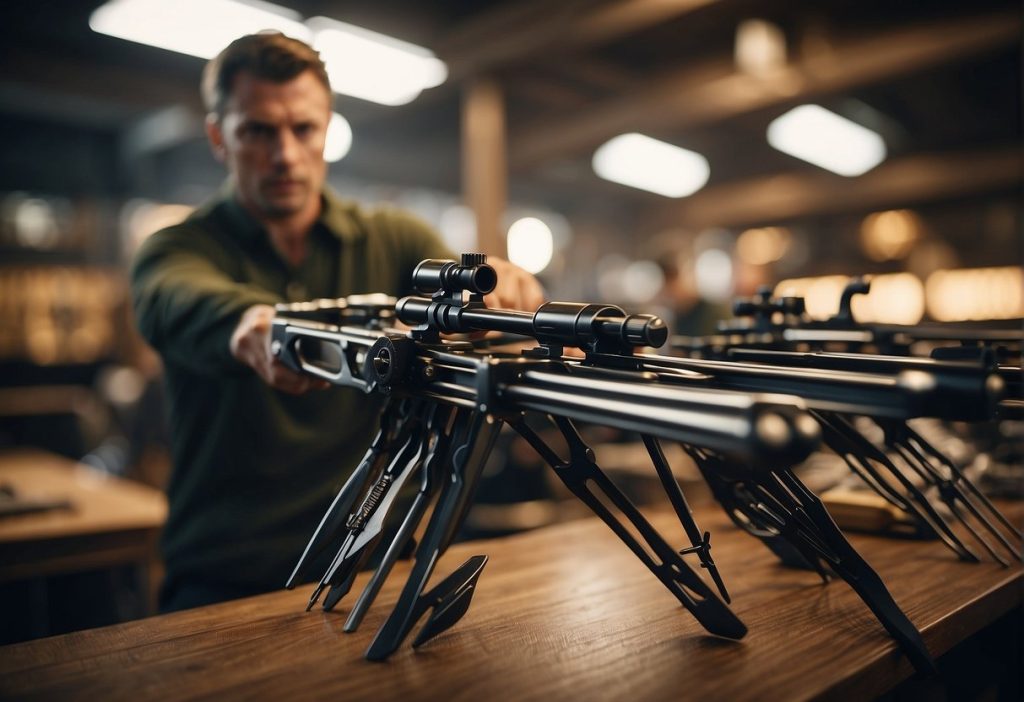
Fixed vs. Mechanical Broadheads
When choosing broadheads for your crossbow, it’s essential to decide between fixed or mechanical broadheads. Fixed broadheads feature solid, non-moving blades that provide powerful penetration and durability. On the other hand, mechanical broadheads have blades that open upon impact, creating a larger wound channel, but may require more maintenance due to moving parts.
Some hunters prefer fixed broadheads for their reliability, as the blades remain in place and can withstand more abuse. When selecting a fixed-blade broadhead, the Wasp Archery recommends considering your crossbow models and bolt choice to ensure compatibility.
Mechanical broadheads such as the Rage Hypodermic Crossbow and Crossbow X blade have gained popularity due to their larger cutting diameter and increased chances of a quick, ethical kill. However, mechanical broadheads can be prone to opening prematurely or failing to open, which can lead to poor performance.
Weight and Aerodynamics
When selecting a broadhead, consider the weight and aerodynamics:
- Weight: Broadhead weight affects bolt trajectory and penetration. Common weight options are 100, 125, or 150 grains. Heavier broadheads offer more kinetic energy, while lighter broadheads provide faster speeds. Be sure to match the broadhead weight with the different manufacturers’ recommendation for your crossbow.
- Aerodynamics: The shape and design of a broadhead can significantly influence its flight characteristics. Smaller profile broadheads, like low-profile mechanical or compact fixed, generally fly truer to your field points. Ensure your broadhead choice maintains stability while flying and penetrates your target effectively.
Choosing the right broadhead for your crossbow involves analyzing both personal preference and hunting requirements. Consider factors such as blade type, weight, and aerodynamics when making your decision, and always practice with your chosen broadheads before heading out for a hunt.
The Role of Vanes and Fletching
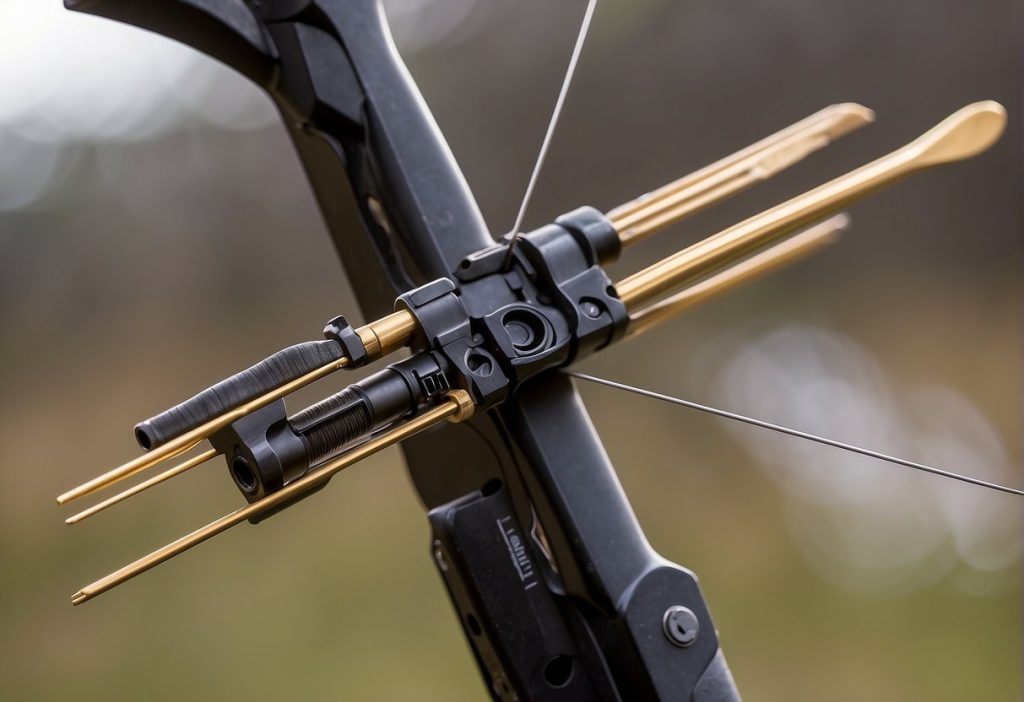
When it comes to crossbow bolts, the performance and accuracy are determined by several factors, including the vanes and fletching. In this section, we will discuss their roles and how they affect the overall performance of the bolt.
Vanes are small plastic or rubber fins found at the rear end of a crossbow bolt. They play a critical role in the bolt’s aerodynamics, stability, and flight. In combination with the fletching pattern, vanes aid in maintaining the projectile’s intended trajectory, leading to greater accuracy and precision.
Fletching is the arrangement and orientation of vanes on the bolt. There are various fletching patterns you can use, depending on your desired outcome. For instance, the straight fletch pattern aligns the vanes in a straight line parallel to the bolt’s shaft. This pattern is known for producing minimal drag, which leads to a flatter trajectory. On the other hand, a helical fletching pattern provides greater stability and spin, improving the accuracy of the bolt, especially at longer distances.
Field point is a type of arrowhead that is commonly used for target practice and small game hunting. When paired with the right fletching, it provides excellent flight characteristics and impact consistency. Installing vanes with the right offset, or degree of rotation, can significantly affect the performance of a bolt with a field point. A slight offset, such as one degree, is recommended for crossbow bolts, as it gives a balance between stability and drag reduction.
To ensure optimal precision and performance, it’s essential to choose the right vanes and fletching pattern for your crossbow bolts:
- Material: Opt for vanes made from durable and flexible materials, such as rubber or plastic.
- Vane length: Shorter vanes, like the popular Bohning Blazer, provide excellent stability and steering, especially in crosswinds.
- Fletching pattern: Your choice of fletching pattern will depend on your desired trajectory and stability levels. Straight fletching patterns offer less drag, while helical patterns offer improved accuracy and stability.
Remember, experimenting with different vanes, fletchings, and offsets will help you find the perfect combination to enhance the performance of your crossbow bolts. So take time to test out various configurations to discover what works best for your specific shooting style and needs.
Innovations in Bolt Technology
Lightweight Design
Recent advancements in crossbow bolt technology have led to the development of lightweight designs that allow for faster speeds and improved accuracy. One notable example is the TenPoint EVO-X CenterPunch, which boasts a sleek, aerodynamic profile to help increase your shooting performance. Lightweight bolts like these help minimize energy loss during flight, giving you a better chance of hitting your target.
Advanced Materials
Advanced materials, like carbon fiber, have transformed the way crossbow bolts are made. These materials offer many benefits, such as increased strength and durability, while still remaining lightweight. For instance, the Carbon Express Maxima Hunter is an excellent example of a bolt that incorporates carbon fiber technology to deliver outstanding performance. Using carbon fiber in bolt construction can result in improved consistency and greater accuracy during your hunting experiences.
Cutting-Edge Construction
In addition to using advanced materials, the construction methods employed in creating crossbow bolts have also evolved. Factors such as spine alignment, straightness, and weight consistency are now meticulously optimized during the manufacturing process. Companies like Carbon Express are continuously developing cutting-edge construction techniques for bolts, ensuring that they meet the high-performance expectations of today’s crossbow enthusiasts.
One way innovative construction techniques improve bolt performance is by utilizing different profiles and shapes for vanes. For example, the EVO-X CenterPunch features high-profile 4″ vanes designed to enhance bolt stabilization during flight, leading to greater accuracy and consistency. Moreover, advancements in adhesive technology ensure that these vanes stay securely attached to the shaft, even under the most challenging conditions.
All things considered, the innovations in crossbow bolt technology continue to enhance the performance and effectiveness of these essential tools for archers and hunters alike. So, when you try out new bolts, like the EVO-X CenterPunch or Carbon Express Maxima Hunter, know that you’re benefiting from the latest advancements in bolt design, materials, and construction.
Practical Considerations for Bolt Selection
When choosing the best crossbow bolts, there are several factors you need to consider. In this section, we’ll discuss some of the most relevant aspects, such as hunting vs. target shooting, durability, and price.
Hunting vs. Target Shooting
One of the first aspects you should consider is the purpose of your crossbow bolts. Hunting requires bolts with more power and penetration, while target shooting needs bolts that provide consistent precision and accuracy. Carbon crossbow bolts are known for their good penetration and are a perfect choice for hunting purposes. Meanwhile, aluminum or fiberglass bolts might be a better choice for target shooting due to their lightweight nature and affordability.
Durability and Longevity
The durability of your crossbow bolts is essential for both hunting and target shooting. Carbon fiber bolts, although a bit more expensive, are incredibly durable and can withstand multiple shots. On the other hand, aluminum crossbow bolts tend to be less resilient and may bend or warp, impacting their performance and overall efficiency. It’s crucial to choose bolts made from materials that can withstand the rigors of your preferred usage.
Price and Value
When evaluating crossbow bolts, it’s essential to consider both the price and the value they provide. While carbon fiber bolts may have a higher initial cost, their excellent performance and durability may offset this additional expense over the long run. On the other hand, aluminum and fiberglass bolts can be more budget-friendly, making them an attractive option for those who are just starting out or practicing target shooting. To determine the best option for your needs, it’s helpful to weigh the initial cost against the expected longevity and performance of the bolts.
The Impact of Bolt Weight and Spine
Selecting the right crossbow bolts is crucial for accurate and efficient shooting. Two important factors you need to consider are the bolt’s weight and spine. Understanding their impact will help you make informed decisions when choosing the best bolts for your crossbow.
Bolt weight is measured in grains and directly affects the bolt’s speed, kinetic energy, and penetration power. A heavy bolt generally has more kinetic energy and can deliver a greater impact on your target but travels at a slower speed. On the other hand, a lightweight bolt will have a faster flight, but might not have the same penetration power. Some crossbows perform better with specific bolt weights, so it’s essential to consult your crossbow’s manual for the manufacturer’s recommendations. The weight tolerance of a bolt refers to its consistency in weight from one bolt to another, providing more uniform flight and accuracy.
The spine of a crossbow bolt is its stiffness and ability to flex when launched, impacting the arrow’s trajectory and stability. A bolt with the correct spine rating will fly straight, while improperly matched spine ratings can cause erratic flight, reducing accuracy and consistency. Similar to weight, the spine rating recommendations vary depending on the crossbow’s draw weight.
Here’s a quick reference on what you should consider in terms of weight and spine:
- Weight: Choose a bolt that suits your crossbow’s draw weight and recommended grain weight.
- Spine: Find the correct spine rating based on your crossbow’s draw weight and bolt length.
- Grain Weight: Pay attention to the overall mass and grains per inch (GPI) values.
- Heavy / Lightweight: Evaluate the trade-off between penetration power and bolt speed.
- Weight Tolerance: Select bolts with low weight tolerance for consistent performance.
By factoring in the bolt’s weight and spine, you can optimize your crossbow’s performance and ensure more accurate and consistent shooting. Don’t forget to also consider the bolt’s length and appropriate arrow weight for your specific hunting crossbow to further enhance your experience.
Proper Maintenance and Care
Storage and Handling
Proper storage and handling of your crossbow bolts are essential for their long-term reliability and consistent performance. Always store your bolts in a cool, dry place to prevent moisture buildup and rust. A padded case is ideal for protecting them from impacts and dust. Additionally, make sure to keep your crossbow in a secure location, away from direct sunlight and extreme temperature fluctuations. According to Fellow Hunting, loosening the string tension slightly before storage can help prolong the life of your crossbow limbs.
Handling your bolts with care is also crucial for their upkeep. Avoid touching the shaft and fletching with dirty hands or oily fingers as this can impact their flight consistency.
Inspection and Replacement
Inspecting your crossbow bolts regularly ensures their safety, accuracy, and overall performance. Make a habit of checking the following components:
- Shafts: Look for any cracks, dents, or signs of damage that may affect your shots’ accuracy.
- Fletching: Ensure the vanes are in good condition and securely attached to the shaft.
- Nocks: Verify that the nocks are not broken or damaged.
- Points: Check the points for signs of rust, corrosion, or damaged threads.
Refer to your crossbow’s manual for guidance on specific inspection intervals and replacement schedules. In general, it is advised to lubricate the rail and trigger box every 50-60 shots or when they appear dull and dry, as suggested by Crossbow Joe. When it comes to lubricants, avoid using vaseline-based products and opt for a premium lubricant recommended by the crossbow manufacturer.
Remember that regular maintenance and adherence to the guidelines in your manual will result in a more reliable and consistent shooting experience. By taking good care of your crossbow bolts, you are ensuring a safer and more enjoyable bow hunting adventure.
Crossbow Bolt Buying Guide
When choosing the perfect crossbow bolts, there are several factors to consider for optimal performance.
This guide will help you navigate the essential features of crossbow bolts to make an informed decision.
Length: The length of the bolt plays a crucial role in its performance. Shorter bolts tend to travel faster, while longer ones are heavier and offer better penetration at long ranges. Common bolt lengths range from 16 to 22 inches. Make sure you select a length that’s compatible with your crossbow’s specs.
Straightness: A straight bolt ensures accurate flights and improved consistency. High-quality bolts are measured for straightness in thousandths of an inch, with tolerances ranging from 0.001″ to 0.006″. Look for bolts with a tolerance of 0.003″ or less for better precision.
Construction: Crossbow bolts are made from various materials, with carbon technology and aluminum being the most common. Carbon bolts are lightweight and fast, offering excellent accuracy. Aluminum bolts are heavier, but provide increased durability and penetrating power. Some bolts, like the Easton Full Metal Jacket, combine both materials for optimal performance.
Diameter: Bolt diameter affects penetration and wind resistance. Slimmer bolts offer better aerodynamics and deeper penetration, whereas thicker bolts are more durable. Choose a diameter that complements your intended use, such as hunting or target practice.
Brands and Models: There are many reputable brands and models to choose from when it comes to crossbow bolts. Some popular options include:
- Barnett Outdoors: Known for their high quality and range of options, suitable for various applications.
- TenPoint Pro Lite: Offers 20-inch carbon bolts that strike a balance between speed and durability.
- Excalibur Diablo: Features 18-inch bolts with superior penetration and accuracy, ideal for hunting.
As you navigate through these factors, keep your specific crossbow requirements and intended use in mind to ensure you choose the best crossbow bolts for your needs.
